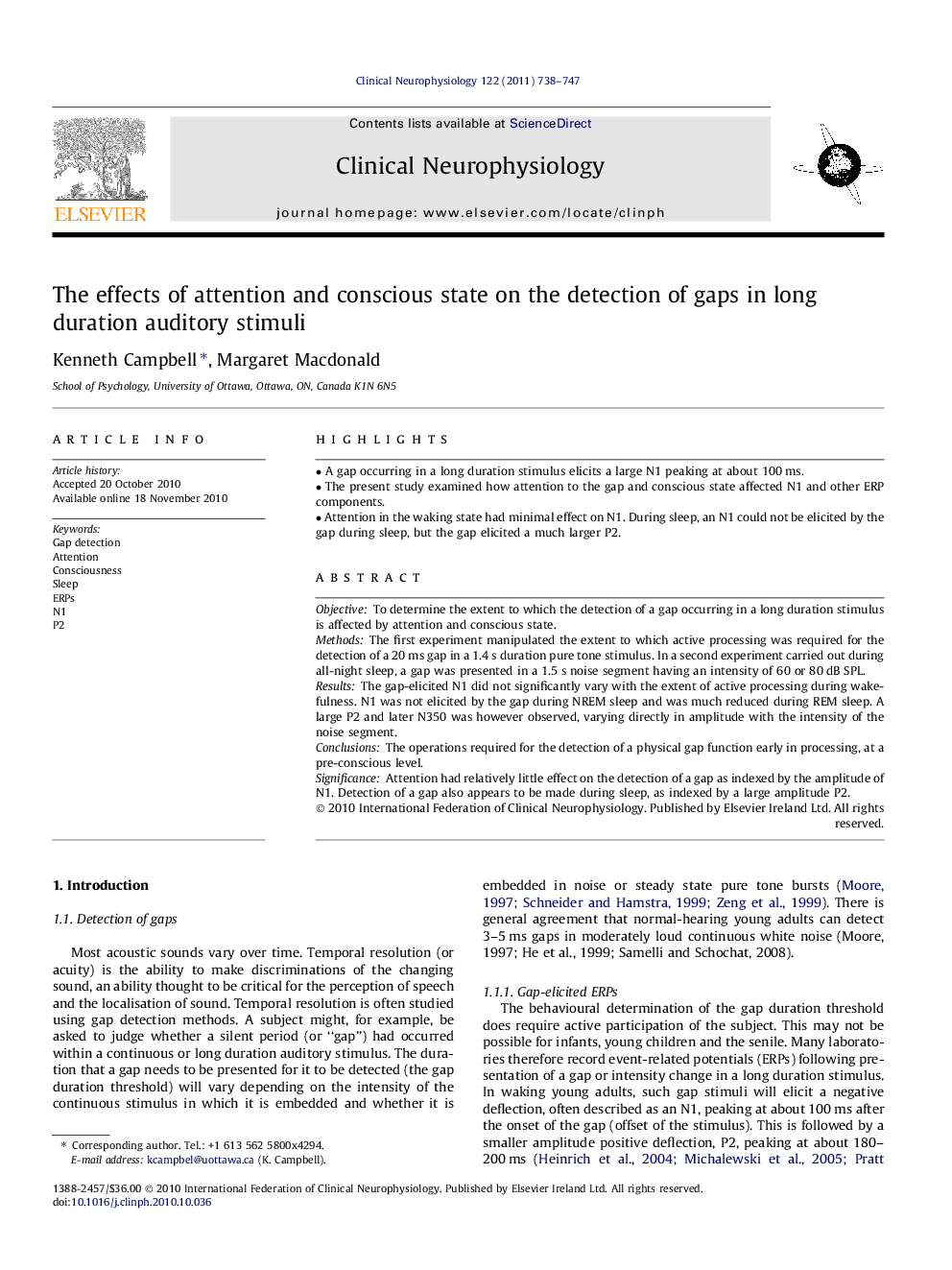| Article ID | Journal | Published Year | Pages | File Type |
|---|---|---|---|---|
| 6009099 | Clinical Neurophysiology | 2011 | 10 Pages |
ObjectiveTo determine the extent to which the detection of a gap occurring in a long duration stimulus is affected by attention and conscious state.MethodsThe first experiment manipulated the extent to which active processing was required for the detection of a 20Â ms gap in a 1.4Â s duration pure tone stimulus. In a second experiment carried out during all-night sleep, a gap was presented in a 1.5Â s noise segment having an intensity of 60 or 80Â dB SPL.ResultsThe gap-elicited N1 did not significantly vary with the extent of active processing during wakefulness. N1 was not elicited by the gap during NREM sleep and was much reduced during REM sleep. A large P2 and later N350 was however observed, varying directly in amplitude with the intensity of the noise segment.ConclusionsThe operations required for the detection of a physical gap function early in processing, at a pre-conscious level.SignificanceAttention had relatively little effect on the detection of a gap as indexed by the amplitude of N1. Detection of a gap also appears to be made during sleep, as indexed by a large amplitude P2.
⺠A gap occurring in a long duration stimulus elicits a large N1 peaking at about 100 ms. ⺠The present study examined how attention to the gap and conscious state affected N1 and other ERP components. ⺠Attention in the waking state had minimal effect on N1. During sleep, an N1 could not be elicited by the gap during sleep, but the gap elicited a much larger P2.
